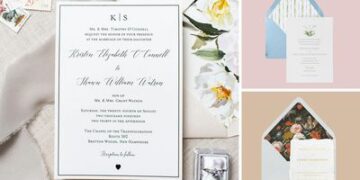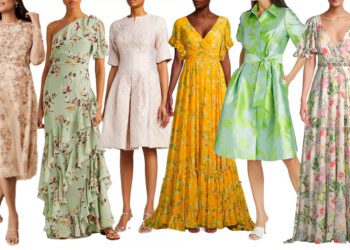One of the most famous bridal fabrics, chiffon, is airy and lightweight. It can be paired with almost any silhouette and looks beautiful when blowing in the breeze.
Satin has various weights, perfect for an airy column gown or dramatic ballgown. It also makes a beautiful overlay or lining.
Silk Mikado
Choosing the suitable custom bridal gown fabric can be one of the most challenging and essential decisions for a bride-to-be. The material will influence how the dress drapes, fits, and moves, so it’s necessary to consider all options before selecting a bridal fabric.
Mikado is a silk fabric similar to heavy taffeta but has a finer pique structure. It’s suited for structured designs and elegant silhouettes like narrow mermaid and strapless ballgown gowns. The fabric’s thickness also allows for a beautiful sheen, perfect for any season.
Satin is a luxurious, thick fabric typically made of silk or a blend. It’s opaque and moderately thick, making it an excellent choice for cold-weather weddings. It’s also very smooth and lustrous, which makes it an ideal option for head-spinning designs.
Tulle is a netting fabric that creates an ethereal look for unique and dreamlike wedding gowns. It’s often used playfully for a tea-length skirt overlay, a bridal cape, or in more dramatic ways, like an underskirt for a full-length bridal gown.
Stretch Crepe
There are a lot of decisions to make when it comes to designing your wedding gown. From the silhouette to the color, so many elements go into making your dream dress a reality.
One of the most important things to consider is the fabric. Choosing a material that is both aesthetically appealing and comfortable enough to wear on your special day is essential.
Crepe fabric is a delicate, flowing material often used for blouses and slips. Its unique texture creates a subtle, pebbled surface that adds visual interest to clothing designs. It can be made with various fibers, including wool, silk, and polyester.
Taffeta is a crisp and supple material that’s ideal for colder seasons. It’s a luxurious blend of silk and synthetic fibers and can be woven in any color. It’s sturdy enough to support the full skirt of a ball gown, but it’s also very lightweight and breathable. This makes it an excellent option for brides who want to feel comfortable and confident on their big day.
Stretch Silk Satin
The most traditional of wedding dress fabrics is satin. It is often made from silk, though it can also be found in a polyester version that offers the same sheen at a more affordable price. This silky smooth fabric is a favorite of brides due to its luxurious feel and regal vibe.
It is a lightweight textile that will be comfortable to wear in warmer weather, and its soft stretch allows us to create flattering body-hugging designs for flawless silhouettes. It can be combined with various colors and textures and look beautiful layered with tulle or other lace for an extra embellished bridal gown.
Its thin fibers make it a very delicate fabric, but with the help of elastane, it can be solid and durable. It can be dyed or printed with a custom design and looks gorgeous to create a unique ombre wedding gown. It can also be paired with silk chiffon for a softer, more feminine silhouette or embroidered with beads or sequins to make a bridal style statement.
Tulle
Known for its delicate, ethereal qualities, tulle is one of the most popular fabrics in bridal attire. It first gained popularity as a fabric in the 19th century, when Marie Taglioni’s portrayal of a fairy in the ballet La Sylphide unknowingly introduced pointe shoes and romantic tutus to the world.
This graceful material comes in various styles and stiffness levels, with better quality silk tulle having the softest drape. It can be found in a range of wedding dresses and professional ballet tutus and veils. In addition to tulle, there are sturdier nylon versions called bridal illusion and dressmaking tulle, which are more lightweight but with similar stiffness levels.
Tulle is also famous for casual skirts worn with denim or leather jacket, as it adds femininity to an outfit without feeling too dressy. However, tulle can be challenging, as it is easy to snag. It’s best to wash it by hand with cold water and mild detergent, ensuring not to twist or wring it.
Silk Faille
A light and silky fabric with a ribbed sheen and a slight stiffness similar to grosgrain. It’s ideal for a fitted, tailored gown with an elegant look.
This soft, translucent material is best suited for spring or summer weddings. Its ethereal appearance makes it perfect for diaphanous silhouettes and goddess looks. It’s an excellent base for embroidery and can add a touch of drama to your dress.
Another popular option is lace, which can add an extra touch of elegance to your gown. This delicate fabric can be found in various embroidered patterns, giving your dress a distinct look that sets you apart from other brides.
While there are many decisions to make when choosing suitable fabrics for your gown, you don’t have to be overwhelmed. With some research, you can find the suitable material to complement your vision and ensure your dream dress fits perfectly. To start the process, schedule an appointment to have your measurements and initial sewing patterns created. You can also order a sample set of fabrics to see the colors and textures for yourself.























